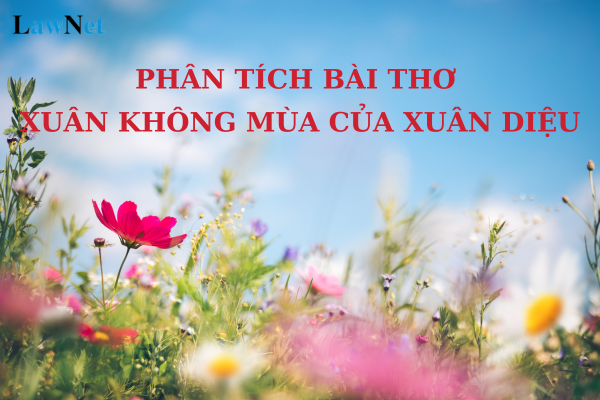What is the sample analysis of the poem "Xuân không mùa" by Xuan Dieu for 10th-grade students in Vietnam? How many methods of enrollment for upper secondary education are there in Vietnam?
What is the sample analysis of the poem "Xuân không mùa" by Xuan Dieu for 10th-grade students in Vietnam?
Grade 10 students can refer to the following sample analysis essays on the poem "Xuân không mùa" by Xuan Dieu:
|
Sample analysis of the poem "Xuân không mùa" by Xuan Dieu The poem "Xuân không mùa" by Xuan Dieu is a work that presents a unique and profound perspective on spring, not only confined to natural scenery but also within the human soul. Xuan Dieu introduced a new concept of spring: not just a season confined to the first three months of the year, rather, spring can exist at any time, anywhere, in every vibrant moment of life. |
Note: the content is for reference only

What is the sample analysis of the poem "Xuân không mùa" by Xuan Dieu for 10th-grade students in Vietnam? How many methods of enrollment for upper secondary education are there in Vietnam? (Image from the Internet)
How many methods of enrollment for upper secondary education are there in Vietnam?
Under Article 9 of the Regulation on enrollment for lower and upper secondary education issued with Circular 30/2024/TT-BGDDT (document effective from February 14, 2025), the methods of enrollment for upper secondary education in Vietnam are:
Methods of enrollment for upper secondary education
1. Annually, the enrollment for upper secondary education is organized once.
2. The enrollment for upper secondary education is conducted using 01 (one) of the 03 (three) methods: admission, entrance exam, and combination of entrance exam and admission.
a) Admission: The admission criteria are the training and academic results across the years of the lower secondary education or the continuing education at the lower secondary level of the candidates, if repeating any class, the results of the repeated year are considered.
b) Entrance exam: according to the regulations in Article 13 of this Regulation.
c) Combination of entrance exam and admission: a combination of the above 02 methods.
Thus, according to the above regulations, there are three methods of enrollment for upper secondary education in 2025: Admission, Entrance exam, and a combination of entrance exam and admission.
Note: Enrollment for upper secondary education is conducted using only one of the three methods: Admission, Entrance exam, and a combination of entrance exam and admission.
What is the specific process for enrollment for upper secondary education in Vietnam?
Under Article 12 of the Regulation on Enrollment for Lower and Upper Secondary Education issued with Circular 30/2024/TT-BGDDT, the specific process for enrollment for upper secondary education in Vietnam is regulated as follows:
Step 1: The Chairman of the Provincial People's Committee approves the plan for enrollment for upper secondary education. The plan includes basic content: candidates, targets and geographical areas for enrollment, enrollment methods, direct admission, priorities, incentives; time for assessing and announcing enrollment results. The plan is published annually before March 31.
For upper secondary schools under the Ministry of Education and Training, parent universities, universities, and research institutes, the enrollment plan is determined by the Minister of Education and Training, Director of the Parent University, Rector of the University, Director of the Research Institute, after consultation with the local Department of Education and Training.
Step 2: Based on the approved enrollment plan, the enrollment council for upper secondary education constructs and publicly announces the school's enrollment plan; organizes registration, and receives, and prepares the registration content.
Step 3: The enrollment council carries out the enrollment according to the approved plan and proposes the list of successful students to the School Principal for submission to the Director of the Department of Education and Training for approval.
For upper secondary schools under the Ministry of Education and Training, parent universities, universities, and research institutes, the list is approved by the Minister of Education and Training, the Director of the Parent University, the Rector of the University, the Director of the Research Institute, who directly manages the institution.

